Bratislava on the Danube
Things to do and see in the Slovakian capital
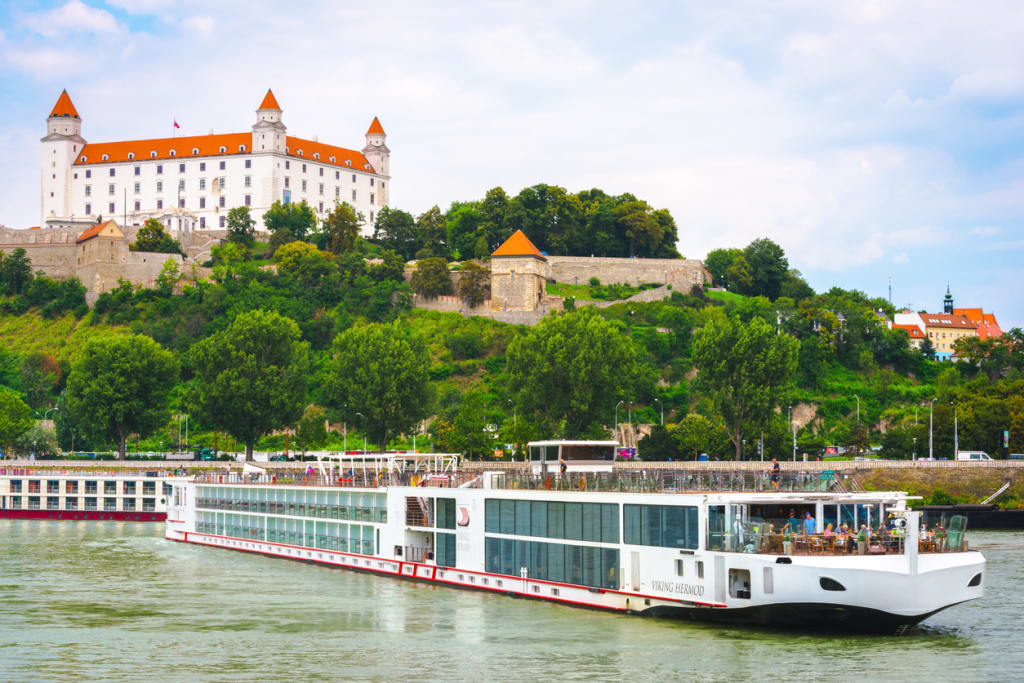
Bratislava is the capital and the largest city of Slovakia. This beautiful city sits on both banks of the Danube River at the foot of the Little Carpathian Mountains. Visitors enjoy seeing the vineyards on the slopes of the mountains, where they meet with the Danube.
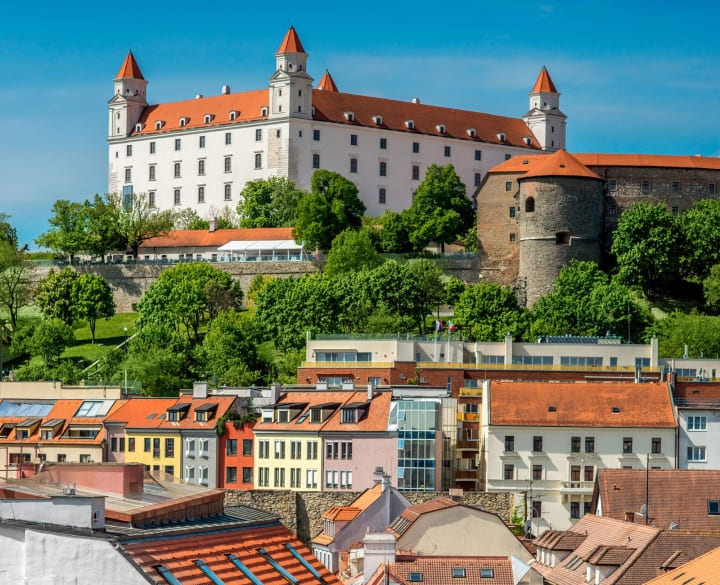
Bratislava Castle sits atop a rocky hill. The castle has four massive towers from which you can get great views on clear days, even into Austria and parts of Hungary.

The Crown Tower, at 47-meters, is the oldest, dating back to the 13th century. At one time, it housed the crown jewels. Today the castle houses a branch of the Slovak National Museum with documents, photos, and artifacts showing the area's development from the Middle Ages. On the grounds of the castle is an 11th-century Great Moravian Basilica.
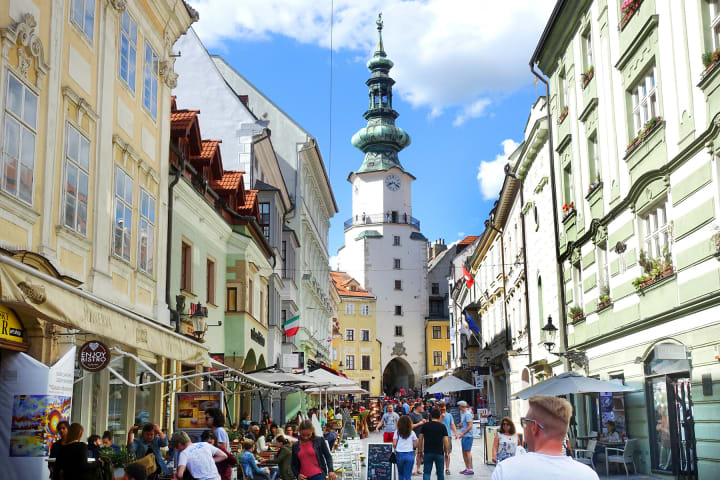
The Old Town will take you back into history. St Michael's Tower is a symbol of Bratislava. The gate on the tower is the original gate from the time this was a fortified medieval city. The tower offers a weaponry exhibition and on display city fortifications of the Bratislava City Museum.
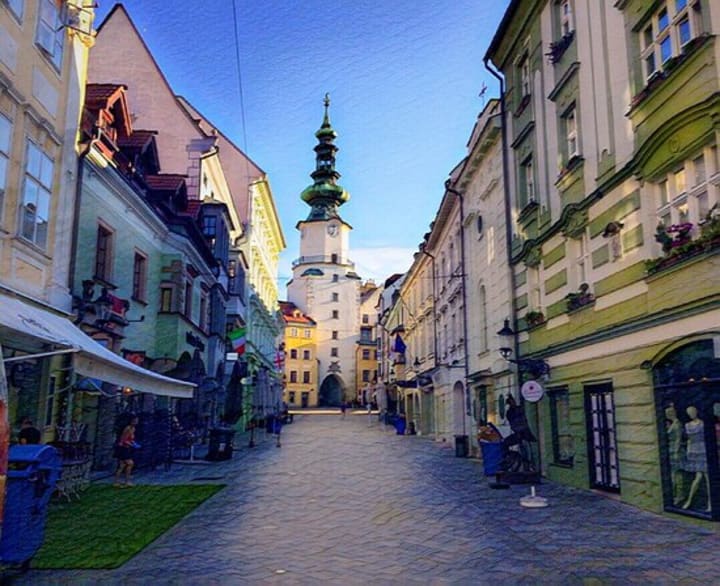
You can get views of the entire St Michael's Street right from St Michael's Gate, one of the oldest in the city. By climbing up to the top of the tower and stepping out on the balcony, you can get fantastic views of the Old Town.

St Michael's Gate dates from the 1300s. During one of its reconstructions in 1758, a large St Michael and the Dragon statue was placed on top of the gate.

The address of Palffy Palace is number 10, and it was built in the Baroque style. A plaque informs visitors that a six-year-old child who went on to become Wolfgang Amadeus Mozart once performed here.
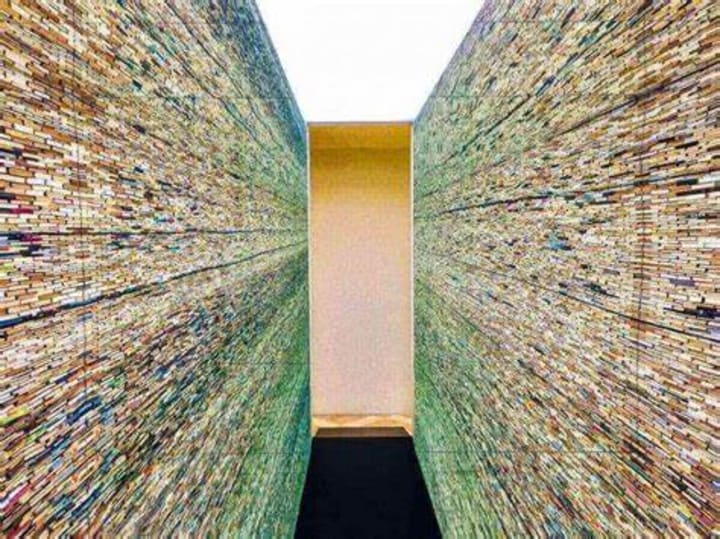
Matej Kren Passage was installed in the Palffy Palace to evoke an illusion to visitors that this was an endless space created with books. This passage has been praised by world experts, and many visualizations and photos have been published in major fine arts journals worldwide.

St Martin's Cathedral dates from the 14th century and is the oldest and largest church in Bratislava. It was a coronation church between 1563 and 1830.

If you're looking for excitement, then the liveliest place in the Old Town is at the crossroads of Fisherman's Gate and Panska and Laurinska Streets. Visitors can take photos of the unusual Cumil Statue, and people enjoy listening to the music played by street musicians.
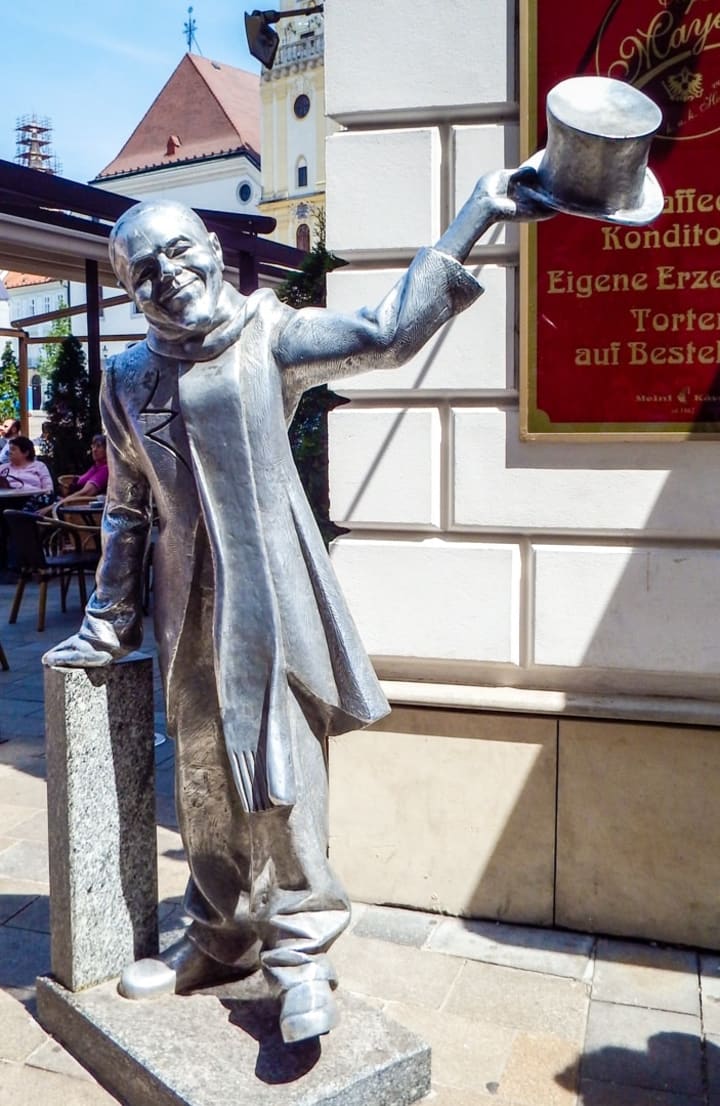
Next to house number 1, you'll see a statue of a life-sized man holding his hat in his hand, looking like he is greeting all who pass by. The silver sculpture was created by Schoner Nazi, a Bratislava local.
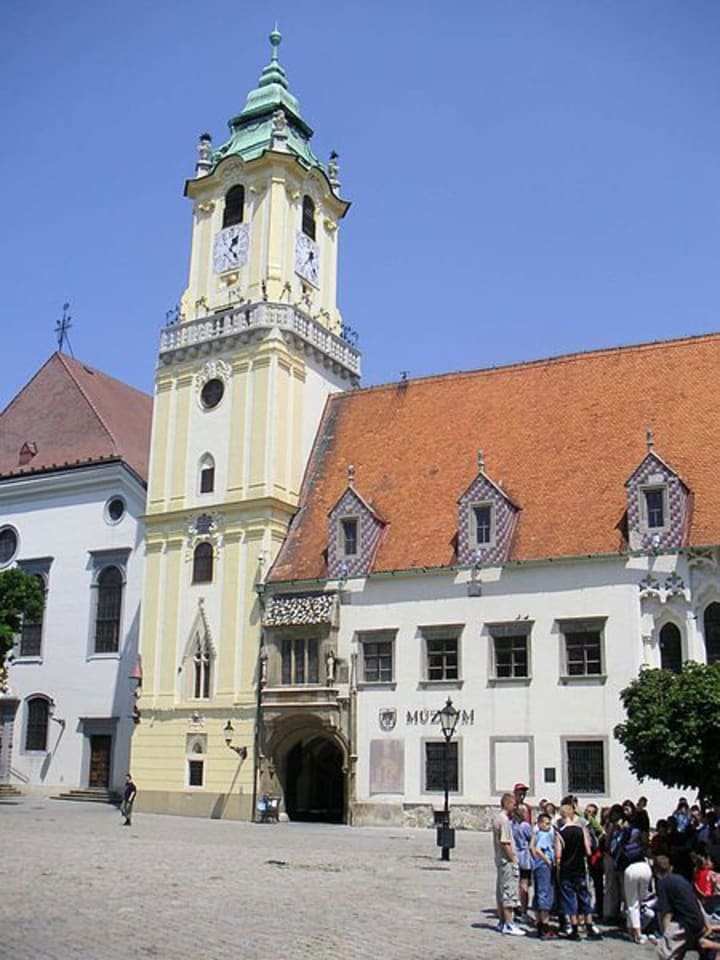
The Old Town Hall is a prominent landmark on Main Square. A plaque on the building marked the water level of the Danube during the floods of February 1850. You can see an exhibition of the city's history and feudal justice. On the square, people enjoy resting by the Renaissance-style fountain.

Nearby is a bench with a statue of a French soldier. In the summertime, you can enjoy outdoor cafes.

Surrounded by historical buildings, Franciscan Square got its name from the Franciscan Church and monastery in the 13th century. At the upper part of the square is Mirbach's Palace, built in the Rococo style. Inside is the Bratislava City Gallery.

Primate Square is one of the most beautiful squares in the city. The Primate's Palace takes up the south side of the square. Visitors can see a collection of six Bratislava tapestries that date from the 17th century.

Primate's Palace in the neo-Classical style dates from the 18th century. Today it is the seat of the mayor of Bratislava. Parts are open to tours. One of the highlights is the Hall of Mirrors, a conference room decorated in red and gold where special classical concerts and events are held. In the inner courtyard, you can find a fountain with a statue of St George, known as "the dragon slayer."

The prominent landmark of Hodz's Square is the Presidential Palace, also known as Grassalkovich Palace, built as Anton Grassalkovich's garden palace after 1760. It has been the official residence of the President of Slovakia since 1996. The Roccoco/Baroque palace has a formal French garden. The garden is open to the public. In the garden, you can find a statue of Empress Maria Theresa, sculptures by old and modern Slovak sculptors, and the famous Fountain of Youth, designed with three naked figures playing in the water.
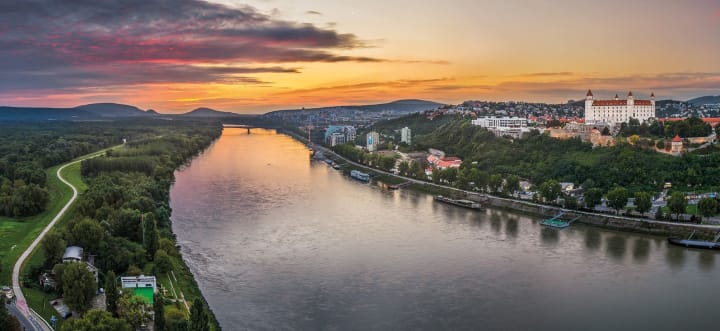
The Danube River is the second-longest river in Europe. The river flows through Bratislava. It inspired “The Blue Danube” by Johann Strauss, who composed part of his composition in the city in 1852. Along the river are hotels, floating restaurants, and shopping complexes. There is a beautiful riverbank walkway to stroll along, bridges, and shady spaces to relax. In the summertime, you can take a riverboat to either Vienna, Austria, or Budapest, Hungary. If you crave adventure, you can take a downstream canoe trip.

The embankment between the historic center and the left bank of the Danube is a great place for walking. You can visit a museum or gallery and have a drink at a cafe or restaurant. Sightseeing cruises are available along the river, with one of the most popular cruises to the ruins of Devin Castle.

Devin Castle sits in the suburbs of Bratislava near the border with Austria. During the Napoleonic Wars, the castle was bombed and left in ruins. The ruins of the 9th-century castle perch on top of a 212-meter-tall cliff, where the Danube and Morava Rivers meet. Visitors can walk around the maze of staircases, courtyards, and walls.

The most photographed spot is the Maiden Tower sitting on a lone rock, away from the castle, overlooking the river.

Hviedoslav's Square was built in 1886 and is home to the Slovak National Theater and the luxurious Carlton Hotel. This Square has been around for more than 1,000 years.
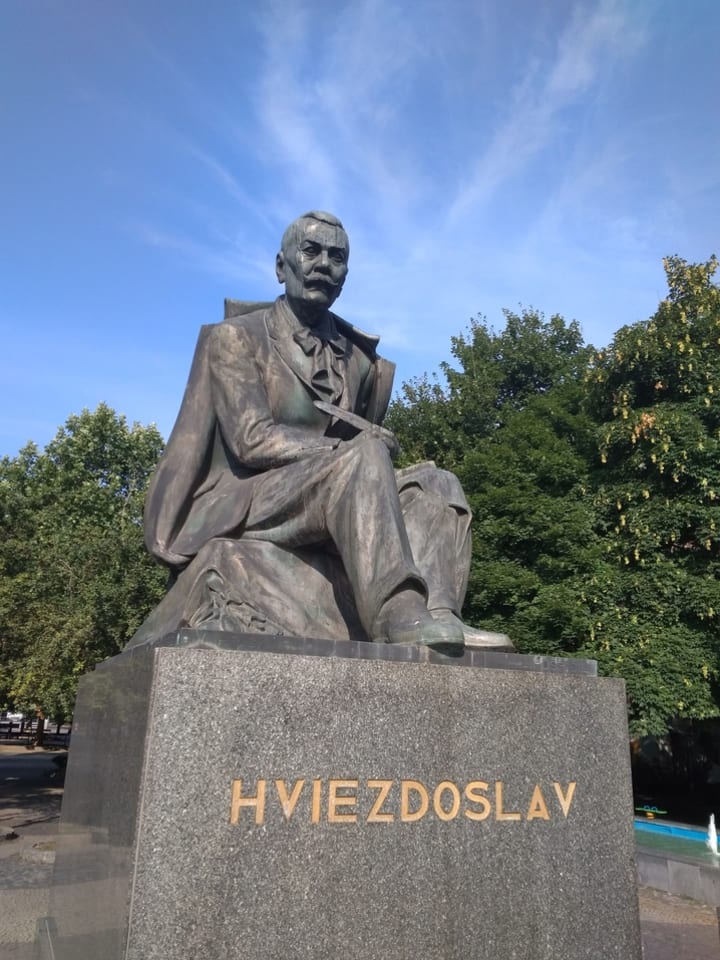
The square got its name from Slovakia's most beloved poet, Pavol Orszagh Hviezdoslav. You can see a statue of him by one of the fountains that dot the Square.

Also, look for the Hans Christian Andersen statue, created to commemorate the 200th anniversary of the storyteller's birth. The Square is a green pedestrian zone with benches, fountains, and an outdoor podium for live music and cultural events.

The Slovak National Theater consists of two buildings – a neo-Renaissance building in the Old Town and a newly designed structure that opened in 2007.

Even though both buildings offer performances, the newer theater has all three ensembles – opera, ballet, and drama.

The Slovak National Gallery consists of several buildings around Slovakia. The gallery has found its home in the Esterhazy Palace and the Water Barracks. Both buildings are next to each other and near the Danube riverfront. The gallery displays classical and modern paintings and sculptures strongly connected to Slovakia. The ground floors of both buildings exhibit artworks from the permanent collection, and the other floors have temporary exhibits and visiting artists.

The Kamzik TV Tower, at 196-meters tall sits at the top of Kamzik Hill in Bratislava Forest Park. The observation deck offers spectacular views of Austria, the Czech Republic, and Hungary in the distance. Onsite are a revolving restaurant, a cafe, and a smaller eatery.
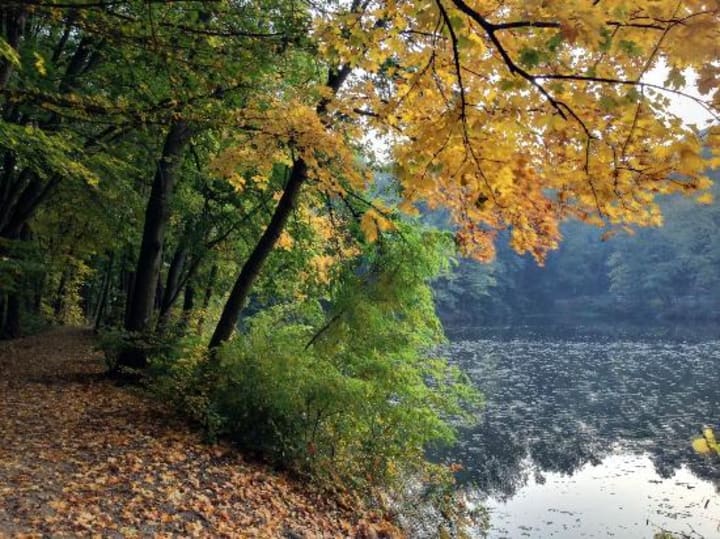
Bratislava Forest Park has hiking trails, a dry bobsleigh run, a treetop rope walk, and many places to get a snack. You can get a cable car that will take you down into the Zelzna Studnicka Valley.
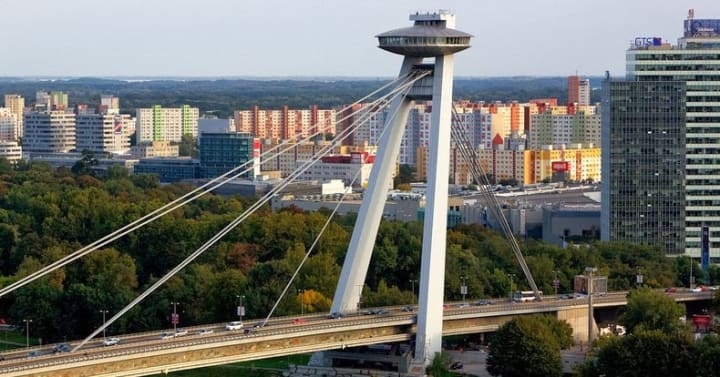
The SNP Bridge is also called the UFO Bridge because of the flying-saucer-shaped observation area. The bridge is 303-meters long and crosses the Danube. It is a two-level bridge with one level for four lanes of traffic and the other for pedestrians and bikes. From the observation deck, you can get great views of the city. There is a restaurant serving traditional Slovak food. The 95-meter-tall observation deck is accessible by an elevator in one of the “legs” of the bridge.

The Art Nouveau Church of St Elizabeth is best known as the “Blue Church.” It was built in 1909 as a Hungarian Secessionist Catholic Church. The church is a popular sight with its colorful exterior with blue paint, tiles, and mosaics. Today the benches, ceiling, and walls are blue and covered in majolica and blue-glazed ceramic tiles. The church is dedicated to Elizabeth, the 19th-century Empress of Austria and Queen of Hungary.

The Bratislava Zoo Is a wonderful place in the summertime. The latest addition to the zoo is some rare white tigers. The zoo is located in the area of Mlynska Dolina, which is the borough of Karlova Ves on the slopes of the forested hills of the Little Carpathians. It has become home to 169 animal species.

Among the major attractions are the white lions, white tigers, and the Dino Park featuring moving life-size sculptures of dinosaurs.
About the Creator
Rasma Raisters
My passions are writing and creating poetry. I write for several sites online and have four themed blogs on Wordpress. Please follow me on Twitter.






Comments (1)
🌹